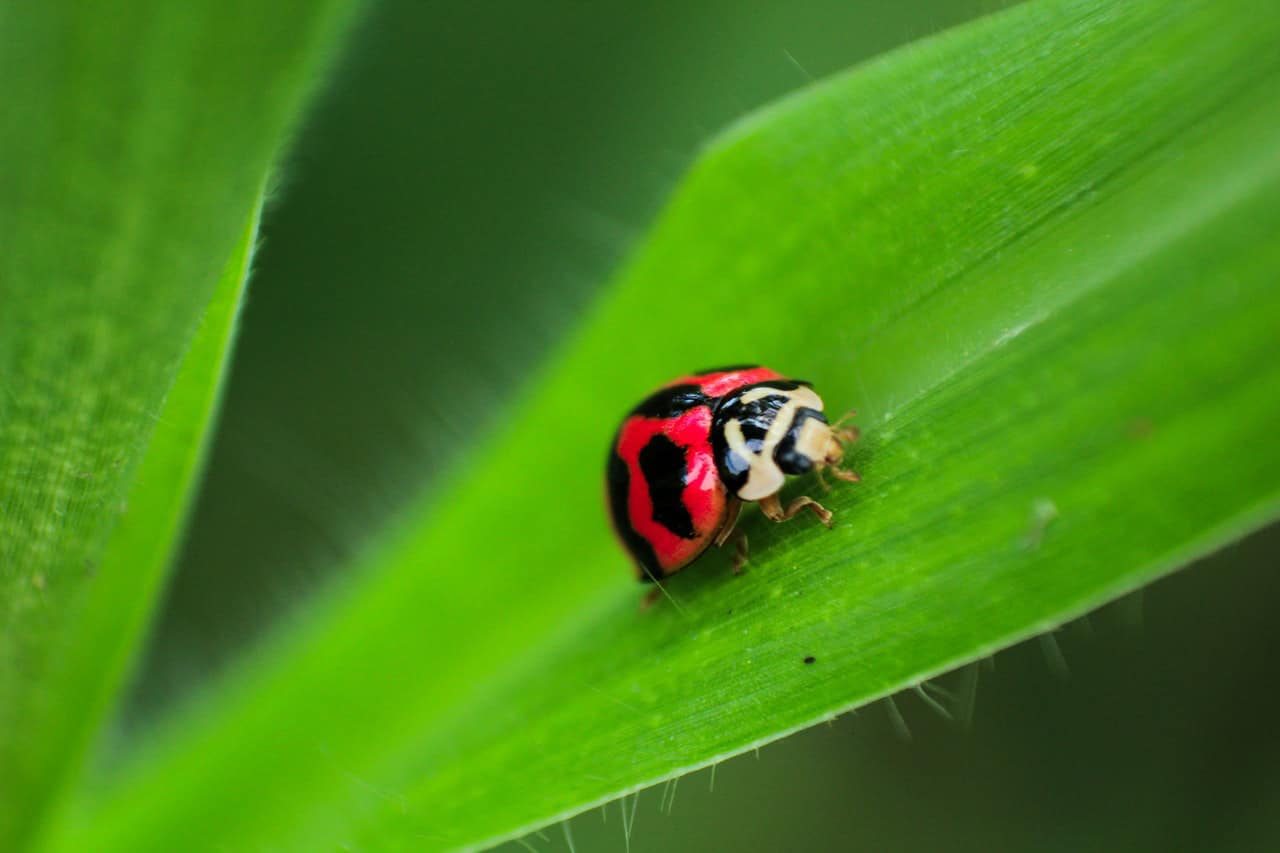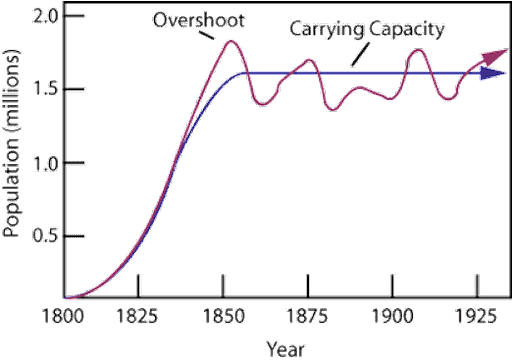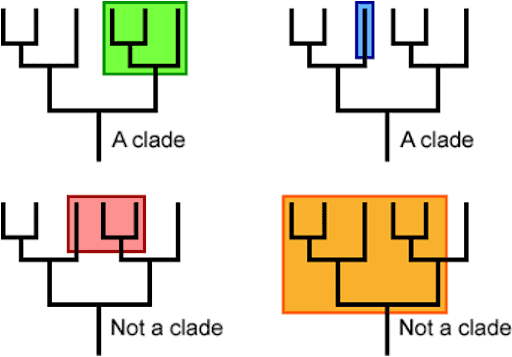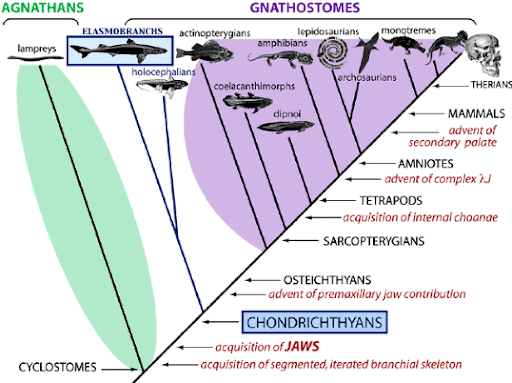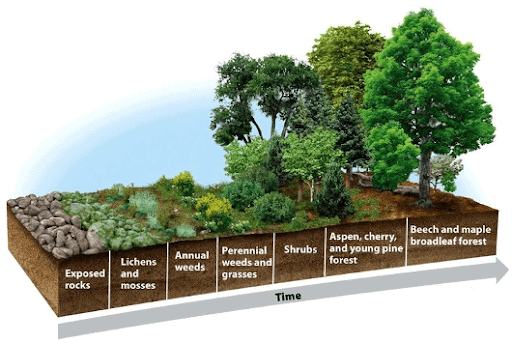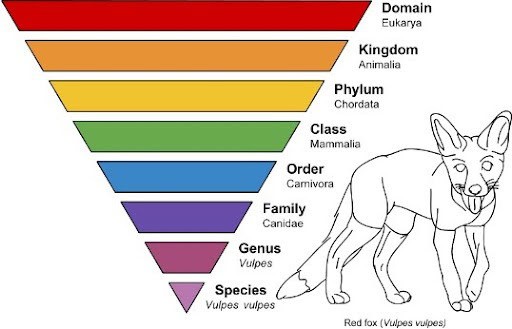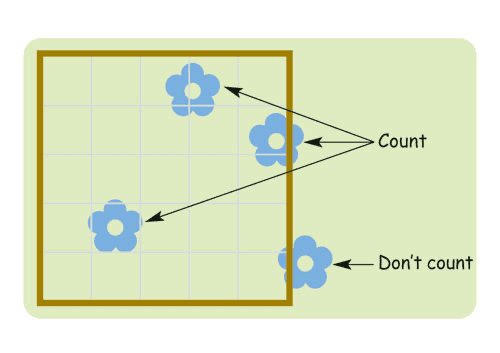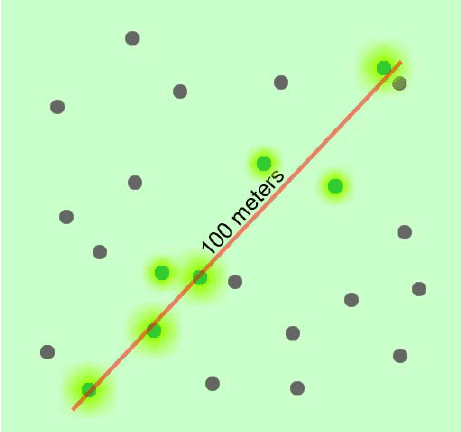Finding it hard to remember all the key terms you’ve studied in Unit 3 for QCAA Biology?
Don’t worry! We’ve got you covered with our list of QCAA Biology terms — you’ll also be able to download our list to have on hand.
What are you waiting for? Let’s get into it!
QCAA Biology Terms
A | B | C | D | E | F | G | H | I | J | K | L | M | N | O | P | Q | R | S | T | U | V | W | X | Y | Z
Abiotic
Physical or chemical components of the environment that are non-living and impact living organisms, as well as the functioning of the ecosystem.
Biodiversity
A measure of the variation of life on Earth — including genetic variation or the number of species in an area.
Biomass
Organic material in the environment.
Biotic
Components of the environment that are living.
Carrying Capacity
The size of the population that can be supported indefinitely on the available resources and services of that ecosystem.
Image sourced from Socratic.org
Clade
A group of organisms that consist of a common ancestor and all its lineal descendants.
Image sourced from Understanding Evolution
Cladistics
An approach to classification that categorises organisms based on hypotheses about group/individual relatedness and common ancestry. Typically, it is based on shared characteristics.
Cladogram
An evolutionary tree that indicates relationships between individuals – based on shared phenotypes.
Image sourced from Research Gate
Classify
Arrange, distribute or order is classes or categories according to shared qualities or characteristics.
Climax Community
A stable community of organisms in the final stage of succession.
Competition
The rivalry between individuals or groups of organisms for resources such as food, shelter, sunlight, and mates. It is an example of a symbiotic relationship.
Competitive Exclusion Principle
Two species cannot occupy the same niche and stably coexist — due to requiring the same resources.
Disease
An abnormal condition (impacting structure or function) that negatively affects the organism.
Ecological Niche
The role and space that an organism fills in an ecosystem, including all its interactions with the biotic and abiotic factors of its environment.
Ecological Succession
The steady and gradual developmental process of ecosystems from bare ground to climax community.
Image sourced from Living Nature
Ecoregion
Areas containing ecosystems of similar characteristics. Each ecoregion has geographically distinct collections of communities.
Ecosystem
An area where organisms interact with each other and the physical environment surrounding them, and different biotic and abiotic components are linked through nutrient cycles and energy transfers.
Emigration
Moving away from your place of residence.
Remember to incorporate these definitions in your study notes by learning how to take effective study notes for science!
Environment
An area occupied by organisms. It includes the elements surrounding the organisms as well.
Habitat
An array of resources, abiotic and biotic factors, present in a given area, that aid the survival of particular species.
Immigration
The movement into a new location.
Interspecific Hybrid
The offspring of parents from two different species.
Keystone Species
A plant or animal that plays a unique and crucial role in the way an ecosystem functions.
Lincoln Index
A means of estimating the population size of a given animal species. It works by capturing, marking, releasing and then recapturing individuals from the species of interest.
Linnaean System
A classification system that places organisms into groups depending upon their physical characteristics.
Image sourced from Woo! Jr.
Microhabitat
A subsection of a habitat that hosts unique conditions — differing from the surrounding, larger habitat. Microhabitats may be home to specific species that cannot live in the larger habitat.
Nitrogen Fixation
The process in which nitrogen in the air is liberated — converting it into ammonia or another nitrogenous compound (usually to be used by plants).
Percentage Cover
A measure of the influence that a particular plant species has on the ecosystem and how much space it is taking up.
Photosynthesis
The process by which photosynthetic autotrophs use sunlight, water, and carbon dioxide to generate oxygen and glucose.
Image sourced from Ducksters
Pioneer Species
The first species to colonise a previously barren environment. Typically, they are hardy species capable of withstanding extreme conditions, able to perform photosynthesis, germinate quickly and fixate nitrogen.
Predation
A biological interaction in which an organism kills and eats another organism.
Primary Succession
The first time an area is being colonised by plants and animals. In this form of succession, the area is void of vegetation and usually lacking soil.
Quadrat
Traditionally a square frame used to study the distribution of organisms within the marked area.
Image sourced from Practical Biology
Relative Species Abundance
A measure of the composition of organisms in an ecosystem/area that is made up by a particular species.
Secondary Succession
The second time an area is being colonised. This form of succession occurs after some major disturbance removes the primary species present in an area.
Sere
An intermediate stage on the way to a climax community in the process of ecological succession.
Simpson’s Diversity Index
A measure of biodiversity that accounts for not only the number of species present in a given area, but also the relative abundance of each of those species.
Spatial
Relating to space.
Species
Two organisms that are able to reproduce naturally to produce viable and fertile offspring.
Species Richness
The number of species in a given area.
Stratified Sampling
A type of sampling in which a sample is taken of each strata of the population.
Symbiosis
The relationship or interaction between organisms from two different species.
Temporal
Relating to time.
Transect
A line set across a given area, from which the number of organisms in each species along the transect is counted.
Image sourced from Research Gate
Trophic Level
The position that an organism has in the food chain.
Image sourced from CK-12
On the hunt for other QCAA Biology resources?
You can never have enough practice questions, so lucky for you, we’ve got many that you can work through. Check them out below:
We’ve collated all the key resources that you’ll need to completeTerm 1 of Year 12! We’ve also got everything you need to know about getting ready for your QCE IA1.
- Unit 3 Biology Data Test IA1 Practice Questions
- Unit 3 & 4 Biology External Assessment Practice Questions
- Unit 3 & 4 Biology External Assessment Multiple Choice Practice Questions
- QCAA Biology Practice Exam
- Why Term 2 of the QCE is so Important for Year 12 Students
We’ve also got some handy guides for tackling your QCAA Biology assessments that you should check out:
- The Ultimate Guide to Writing a Student Experiment Report for QCAA Biology
- 4 Simple Steps You Can Follow to Ace Your Research Investigation for QCAA Biology
- How to Ace Your External Assessment for QCAA Biology
- The Ultimate Guide to QCAA Biology Unit 3: Biodiversity and the Interconnectedness of Life
- The Ultimate Guide to QCAA Biology Unit 4: Heredity and Continuity of Life
Also studying Physics Unit 3? Check out our guide on Unit 3: Gravity and Electromagnetism
Are you looking for some extra help with understanding QCAA Biology terms?
We have an incredible team of QLD Biology tutors and mentors!
About to begin Year 12? Take our Year 12 Readiness quiz to see how you compare to the rest!
We can help you master the QCAA Biology syllabus and ace your upcoming Biology assessments with personalised lessons conducted one-on-one in your home or online!
We’ve supported over 8,000 students over the last 11 years, and on average our students score mark improvements of over 20%!
To find out more and get started with an inspirational QLD tutor and mentor, get in touch today or give us a ring on 1300 267 888!
Katelyn Smith was a pioneer in the Queensland ATAR system. After graduating in 2020 with an ATAR of 98.40, she now studies a Bachelor of Advanced Science (Honours) at The University of Queensland — majoring in Physics. Through her studies, she hopes to develop a greater appreciation for how the wonders of the universe work. When she isn’t slaving away behind her unnecessarily large textbooks, she enjoys catching up with friends, scrolling mindlessly through TikTok, and sleeping.

